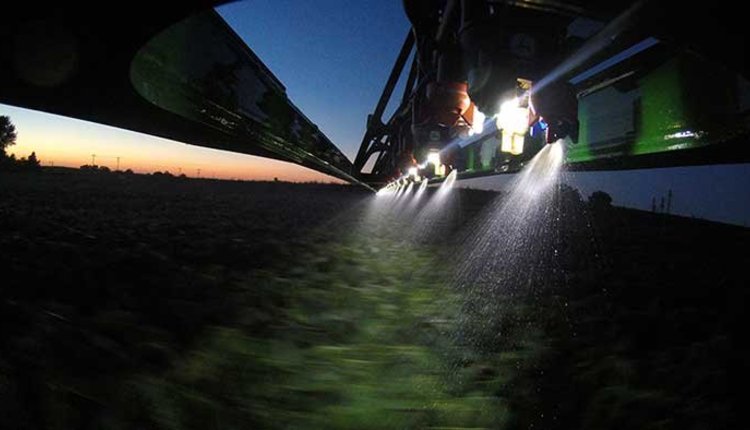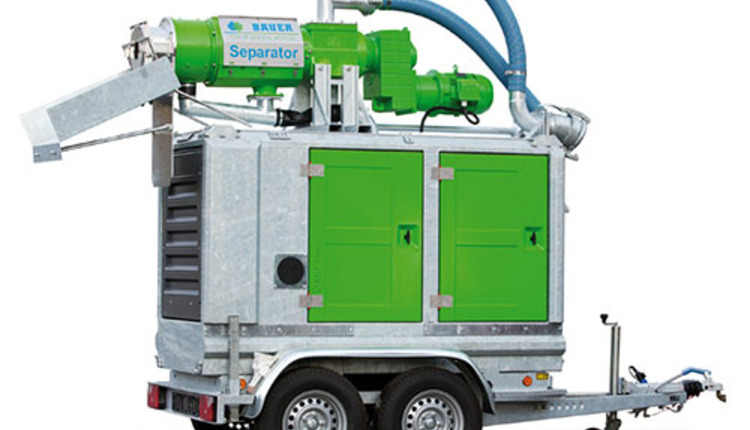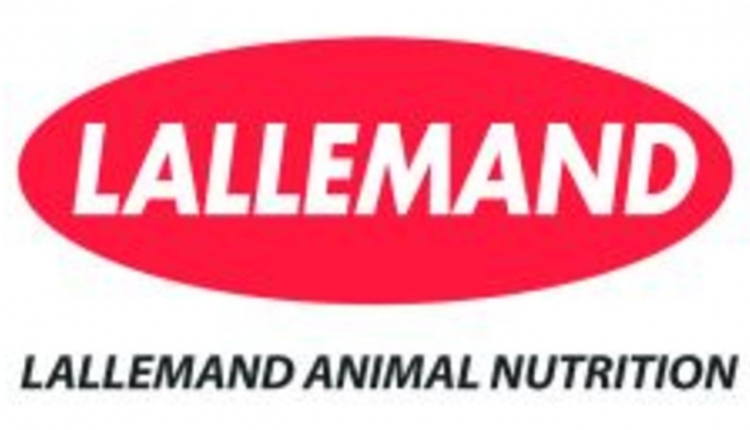 Good nutrient management takes planning, but the first and most basic step is taking a good soil sample. The ‘four Rs' of nutrient management – the right source of nutrients, at the right rate, at the right time, in the right place – are additional best management practices to consider when nutrient management planning.
Good nutrient management takes planning, but the first and most basic step is taking a good soil sample. The ‘four Rs' of nutrient management – the right source of nutrients, at the right rate, at the right time, in the right place – are additional best management practices to consider when nutrient management planning. "The purpose of nutrient management planning is to supply crops with optimal nutrients for maximum yields without wasting fertilizer or threatening our water resources," relates Tim Boerner, Nutrient Management Planner for AgSource Laboratories. "When crops are maturing, tissue testing allows you to see problem areas and fields that need more attention along with those places that are responding to current fertility programs. In the fall, harvest yield data can confirm these observations and is the perfect time for starting the nutrient planning process."
As an agronomist for AgSource Laboratories, Boerner develops plans specifically suited to each customer's needs. Using one-on-one discussions and site visits, he reviews an operation's current crop yields and future yield goals before developing a plan to meet those goals while addressing necessary government water quality protection rules and regulations. Soil type, field slope, soil erodibility, tillage and crop rotations are some of the important considerations to a successful NMP, relates Boerner. Because the plan includes all of these elements, it also serves to minimize risk of runoff and water contamination.
The final plan is always read and reviewed with the farmer. "We take time to do this to ensure the plan is fully understood and meets all of the farmer's goals and expectations," says Boerner.
Soil testing is the basis for every nutrient management plan and testing is even more important in years when there are low grain prices, leading Boerner to recite the slogan, ‘Don't guess; soil test.'
"Soil sampling always pays," he says. "Don't just go out and fertilize without testing. I've had people ask me if they should apply lime, because they haven't done so in a few years. But if you do so without soil testing, you don't have a starting point and you could create a bad situation. Over applying lime actually may restrict uptake of other nutrients to your crop and lead to a costly mistake."
If you've never soil tested before, start out by getting some baseline values. Next, set-up a regular schedule to test – at a minimum every four years – but Boerner suggests the more often the better. The quality of the soil testing is also very important to assuring best results.
"When grain prices are good, a lot of people are willing to do soil sampling and invest in fertility plans. When prices aren't so good, people hesitate on spending for non tangible things, when they shouldn't. Every dollar invested in soil testing can help farmers be more efficient in their nutrient management planning."
Boerner offers the following tips for an effective nutrient management plan.
Right Source: Matches nutrient type to crop needs. There are differences in commercial fertilizer products, as well as differences in types of manure being applied. For instance, nitrogen forms vary in their availability and leachability. Poultry manure is higher in nitrogen than cattle manure so you have to be aware of that and apply it accordingly.
Right Rate: Matches the amount of fertility to the crop needs. This goes back to making sure you are soil sampling and making sure you match recommendations with realistic yield goals. GPS grid sampling and Variable Rate Applications allow you to apply the fertilizer where it is needed while reducing applications where nutrients aren't needed. Rate adjustments can also be made based on your soil type, because clay soils tend to hold nutrients a lot longer than sandy or sandy loam soils. Soils with low cation exchange capacity won't hold nutrients as well as other soils will. Relating fertility to soil type can be almost as important as worrying about the amount of moisture you're having during the growing season.
Right Time: Matches nutrients availability to when crops need them. Nutrient timing depends on soil type, crop stage, and weather, as timing is a factor of how to get fertilizer to the crop when it will be most utilized. Remember that certain types of soils and different crops have varying needs.
Right Place: Putting nutrients in the right place where the crop can use them. When you map a field's fertility you can apply fertilizer based on what each part of the field needs, rather than taking the high and low of the field, splitting the difference and applying an average. GPS grid sampling and Variable Rate Technology allows you to put nutrients exactly where they are needed in the field. Efficiency is an advantage to GPS-specific soil sampling.
With a nutrient management plan and good soil sampling practices in place, a next step can be to use GPS grid sampling for variable rate spreading technology, something many fertilizer plants now offer for even better fertilizer efficiency and increased profit opportunity for farmers.
Tim Boerner has 32 years of diverse experience in the agronomy field. He received a Bachelor's degree in Agronomy from the University of Wisconsin - Madison and holds multiple certifications, including Certified Crop Advisor (CCA), Comprehensive Nutrient Management Planner, NRCS WI-TSP and Conservation Activity Planner. Boerner delivers nutrient management planning services, GPS mapping and soil sampling services to AgSource clients located in West Central and Northwestern Wisconsin.
Additional information on nutrient management planning and quality soil test reporting is available online at www.agsource.com/laboratories. AgSource is a leader in agricultural and environmental laboratory analysis and information management services, with facilities in Iowa, Nebraska, Oregon and Wisconsin. A division of Cooperative Resources International, AgSource Laboratories provides testing services to clients in the United States and across the globe.
10.08.2015








